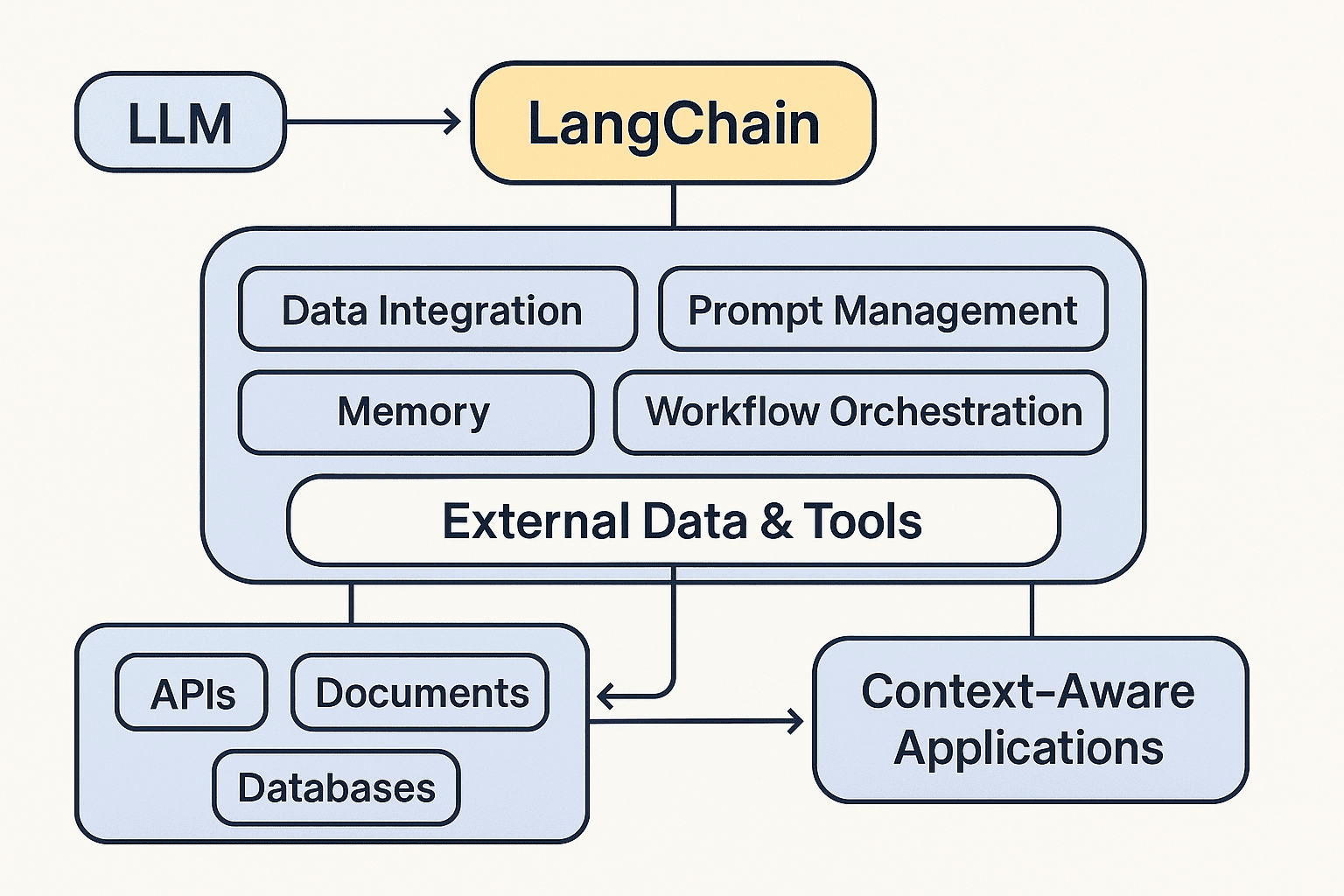Introduction to LangChain
LangChain is an open-source framework that simplifies the process of building applications powered by large language models (LLMs).
In this module, you’ll learn:
- What LangChain is and how it differs from directly calling an LLM API
- Key use cases such as chatbots, retrieval-augmented generation (RAG), and smart assistants
- Why modularity, memory, and integration features make LangChain the ideal choice for building real-world AI tools
LangChain acts as the connective tissue between powerful language models and the real world. Instead of writing brittle one-off prompts or manually wiring APIs, LangChain offers a structured framework that handles prompt management, memory, external data integration, and multi-step logic.
The diagram below illustrates how LangChain transforms raw LLM outputs into context-aware applications by orchestrating tools, databases, APIs, and workflows under one consistent abstraction layer.

🚀 What is LangChain?
LangChain provides essential abstractions for:
- Connecting to LLMs (like OpenAI, Claude, or local models)
- Managing prompts and dynamic inputs
- Integrating external tools, APIs, and memory
- Building chains and agents for advanced workflows
It acts as a “framework layer” over LLM APIs, helping you create context-aware, tool-integrated applications with less boilerplate.
🆚 Why LangChain Over Raw LLM APIs?
| Feature | OpenAI API Direct | LangChain |
|---|---|---|
| Prompt Templates | ❌ Manual | ✅ Built-in |
| Conversation Memory | ❌ Manual | ✅ Easy modules |
| Agents and Tools | ❌ Custom Code | ✅ Ready to use |
| Document Search (RAG) | ❌ Not native | ✅ Supported |
| Deployment | ❌ Manual | ✅ LangServe, LangGraph |
LangChain makes real-world AI app development modular, extensible, and production-ready from day one.
In the next module, we’ll explore the core building blocks of LangChain: Chains, Agents, Memory, and Tools — and how they interact to power intelligent systems.
